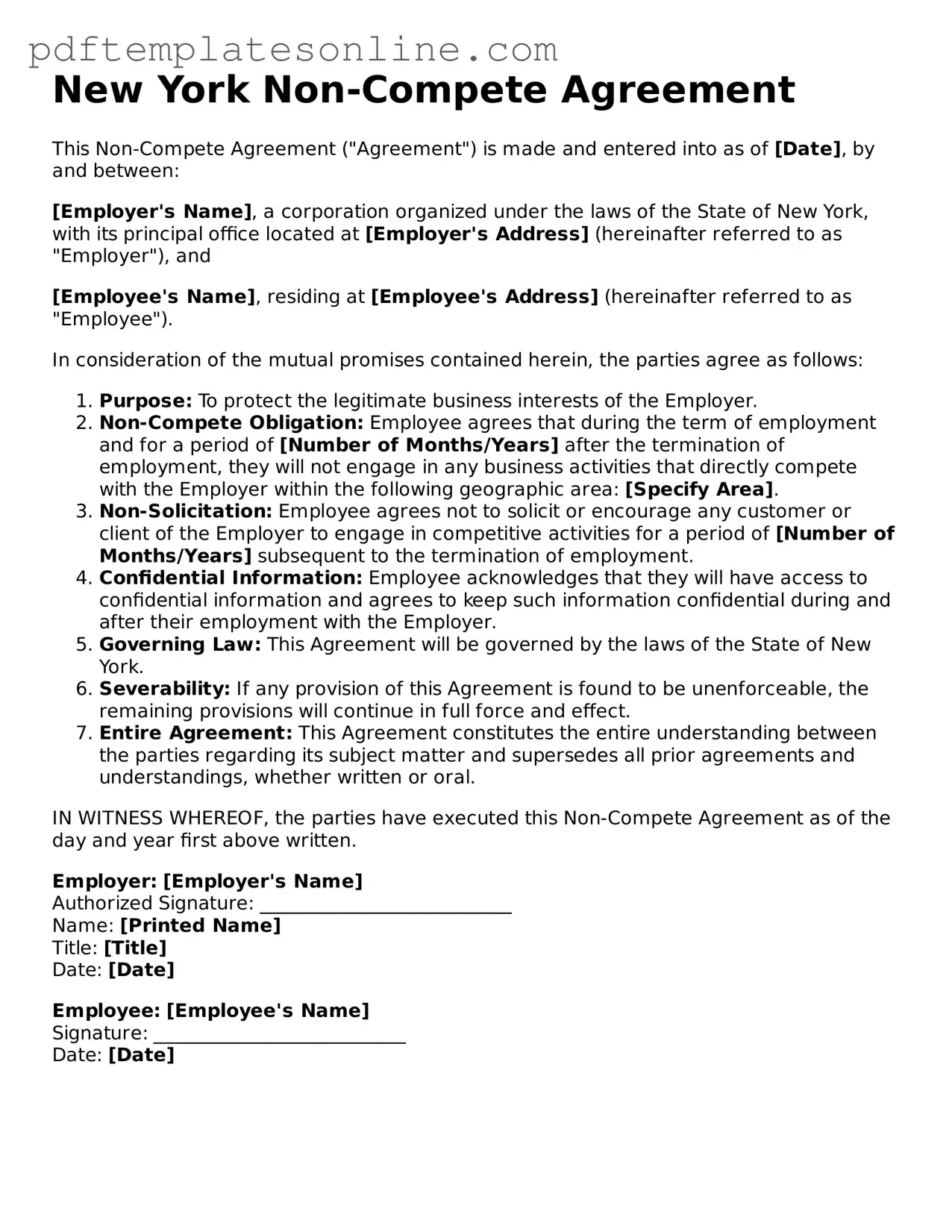Filling out a New York Non-compete Agreement form can be a straightforward process, but many people make common mistakes that can lead to complications down the road. One frequent error is failing to specify the duration of the non-compete clause. Without a clear timeframe, the agreement may be deemed unenforceable. It’s essential to define how long the restrictions will apply to avoid confusion.
Another mistake is neglecting to identify the geographical scope of the agreement. A non-compete should clearly outline the areas where the restrictions apply. Leaving this vague can result in misunderstandings and potential legal challenges. Be specific about the regions or markets covered by the agreement.
Many individuals also overlook the importance of detailing the nature of the restricted activities. A non-compete should explicitly state what actions are prohibited. If the language is too broad or unclear, it could be challenged in court. Clear definitions help ensure that all parties understand their obligations.
Some people fail to consider the consideration, or compensation, for signing the non-compete. In New York, there must be something of value exchanged for the agreement to be enforceable. This could be a job offer, a promotion, or other benefits. Without this, the agreement may not hold up legally.
Another common issue is not reviewing the agreement with legal counsel. Many individuals assume they understand the implications of the non-compete without seeking professional advice. Consulting an attorney can help clarify the terms and ensure that the agreement is fair and enforceable.
Additionally, people sometimes forget to include a clause about severability. If one part of the agreement is found to be unenforceable, the entire document may be at risk. Including a severability clause protects the rest of the agreement, ensuring that it remains intact even if one section is challenged.
Not considering the impact of the non-compete on future employment is another mistake. Some individuals sign these agreements without fully understanding how it may limit their job prospects later on. Assessing the potential consequences before signing is crucial for long-term career planning.
Many also fail to keep a copy of the signed agreement. After filling out the form, it’s important to retain a copy for personal records. This ensures that both parties have access to the same information and can refer back to it if needed.
Finally, some individuals rush through the process without reading the entire agreement thoroughly. Skimming can lead to missing important clauses or terms. Taking the time to read and understand the document can prevent future disputes and misunderstandings.
